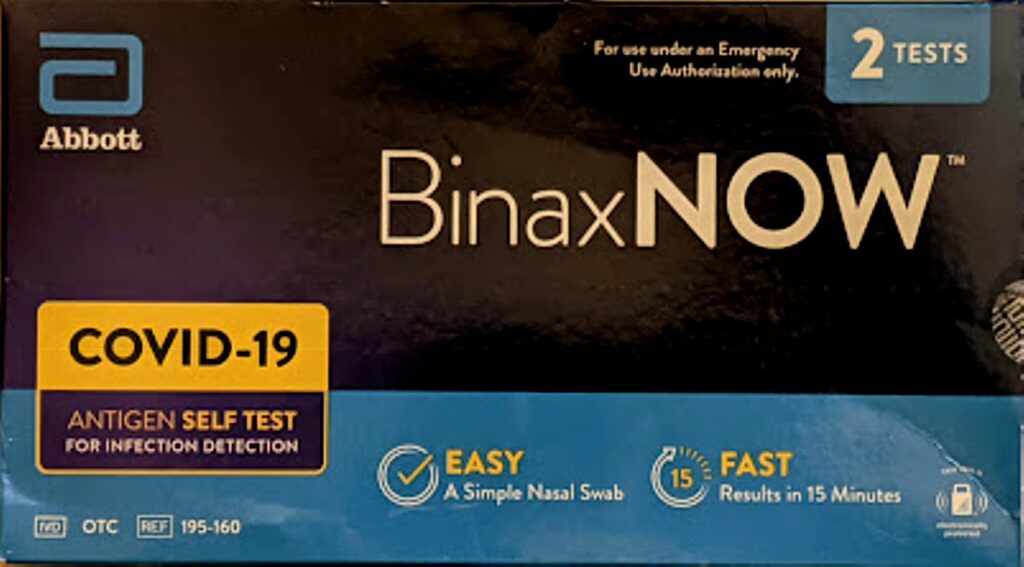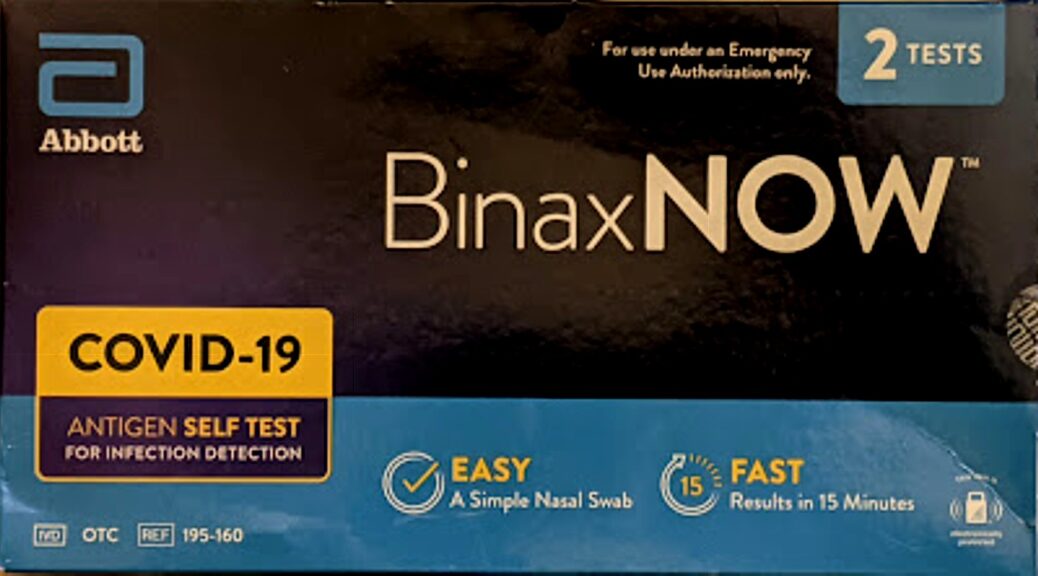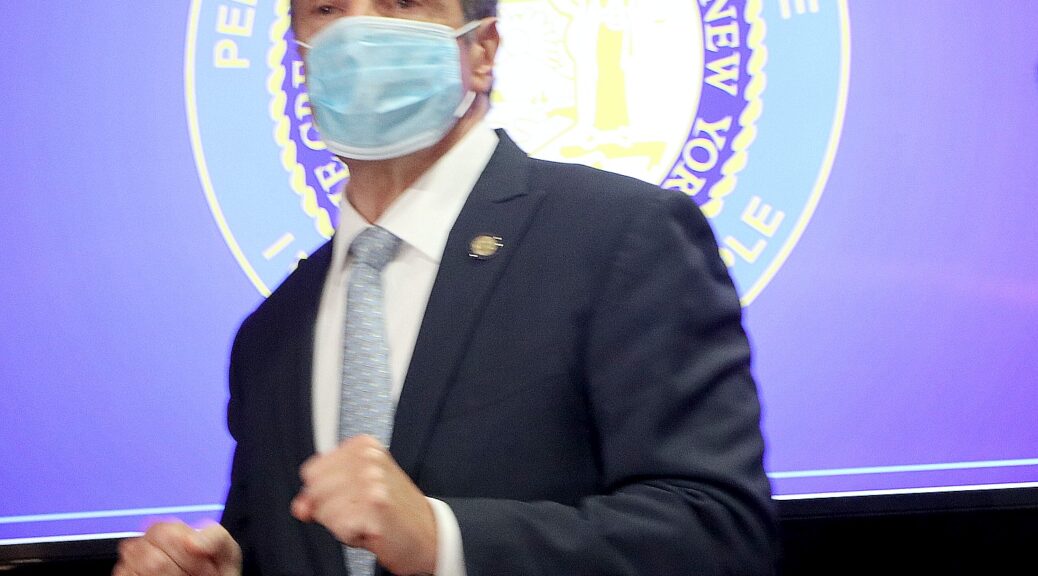
The Biden Administration is Buying One Billion Tests to Give to Americans for Free; Online Ordering of a Half-Billion Tests Begins on January 19th; Builds on Significant Actions to Expand Testing Capacity and Increase Access to Free Testing
Testing is an important tool to help mitigate the spread of COVID-19. Public health experts and the Centers for Disease Control and Prevention recommend that Americans use at-home tests if they begin to have symptoms, at least five days after coming in close contact with someone who has COVID-19, or are gathering indoors with a group of people who are at risk of severe disease or unvaccinated.
To help ensure Americans have tests on hand if a need arises, the Biden Administration is purchasing one billion at-home, rapid COVID-19 tests to give to Americans for free. A half-billion tests will be available for order on January 19th and will be mailed directly to American households.
There will be free tests available for every household, and to promote broad access, the initial program will allow four free tests to be requested per residential address. Starting January 19th, Americans will be able to order their tests online at COVIDTests.gov, and tests will typically ship within 7-12 days of ordering.
To ensure equity and access for all Americans, the Administration will also launch a call line to help those unable to access the website to place orders, and work with national and local community-based organizations to support the nation’s hardest-hit and highest-risk communities in requesting tests.
In addition to this new program, there are many other options for Americans to get tested. There are now over 20,000 free testing sites across the nation, including four times as many pharmacies participating in the federal pharmacy free testing program as there were in January 2021, as well as federal surge free testing sites, with more free testing sites opening each week. Millions of free, at-home COVID-19 tests have been delivered to thousands of community health centers and rural health clinics to distribute to their patients, with more delivered each week. In addition, the Administration provided schools $10 billion in American Rescue Plan (ARP) funding to get tests to K-12 school districts. And, the Administration invested nearly $6 billion in ARP funding to cover free testing for uninsured individuals, and support testing in correctional facilities, shelters for people experiencing homelessness, and mental health facilities.
Just this week, the Administration also announced that starting January 15th, private health insurance companies will be required to cover at-home COVID-19 tests for free—and made an additional 10 million COVID-19 tests available to schools nationwide, each month.
Since January 2021, the Administration has taken significant action to dramatically increase the nation’s overall COVID-19 testing supply, the number of tests authorized for use in the U.S., and the number of places where Americans can get a test, while lowering costs for consumers and increasing access to free tests.
This comprehensive approach has produced important results: Today, there are nine at-home, rapid tests on the market in the U.S.—up from zero when the President took office. In December, there were more than 300 million at-home, rapid tests available in the U.S. market, up from 24 million in August—a more than 10-fold rise. This month, the number of at-home, rapid tests available to the U.S. market will rise to 375 million—in addition to the free tests available through COVIDTests.gov.
Distributing At-Home, Rapid COVID-19 Tests to American Homes for Free: This program will ensure that Americans have at-home, rapid COVID-19 tests available in the weeks and months ahead—in addition to the number of other ways they can get tested. The Administration is quickly completing a contracting process for the unprecedented purchase of one billion at-home, rapid tests to distribute as part of this program. The Department of Defense, in coordination with the Department of Health and Human Services, has already awarded several of the contracts that will result from this process—with over 420 million tests already under contract. Given the incredible volume of tests being procured and the diversity of manufacturers, additional contracts will continue to be awarded over the coming weeks.
- Ordering Process: Starting on January 19th, Americans will be able to order a test online at COVIDTests.gov. To ensure broad access, the program will limit the number of tests sent to each residential address to four tests. Tests will usually ship within 7-12 days of ordering.
- Distribution and Delivery Process: The Administration will partner with the United States Postal Service to package and deliver tests to Americans that want them. All orders in the continental United States will be sent through First Class Package Service, with shipments to Alaska, Hawaii, and the U.S. Territories and APO/FPO/DPO addresses sent through Priority Mail.
- Ensuring Equity and Reaching Hardest-Hit Communities: The Administration is taking a number of steps to ensure this program reaches our hardest-hit and highest-risk communities. This includes prioritizing processing orders to households experiencing the highest social vulnerability and in communities that have experienced a disproportionate share of COVID-19 cases and deaths, particularly during this Omicron surge; launching a free call line, so that Americans who have difficulty accessing the internet or need additional support can phone-in orders for their tests; and, working with national and local organizations with deep experience serving communities of color, people living with disabilities, and other high-risk communities to serve as navigators, raise awareness about the program, and help people submit requests.
The Biden Administration continues acting aggressively to further increase equitable access to free COVID-19 testing for all Americans, as testing needs arise. This includes:
- Requiring Health Insurers to Cover the Cost of At-Home COVID-19 Tests Starting January 15th: On Monday, the Administration announced that, starting January 15th, private insurance companies will be required to cover at-home COVID-19 tests. This means consumers with private health insurance coverage will be able to get these tests for free. Insurance companies and health plans are required to cover eight free at-home tests per covered individual per month. That means a family of four, all on the same plan, would be able to get 32 of these tests covered by their health plan per month. As part of the requirement, the Administration is strongly incentivizing plans and insurers to allow people to get these tests directly through preferred pharmacies or retailers with no out-of-pocket costs, with the plan or insurer covering the cost upfront, eliminating the need for people to submit reimbursement claims.
- Making 10 Million More Tests Available to Schools Nationwide: On Wednesday, the Administration took new actions to increase access to COVID-19 testing in schools. This includes increasing the number of COVID-19 tests available to schools by 10 million per month to help schools safely remain open and implement screening testing and test-to-stay programs—which will allow schools to double the volume of testing they were performing in November 2021—and supporting free testing access for students, school staff, and families through federal testing sites. These actions double down on the Administration’s commitment to keeping all schools safely open for full-time in-person learning, and build on the historic investments the Administration has already made to expand school testing, including providing states $10 billion in American Rescue Plan funding to support COVID-19 screening testing for teachers, staff, and students and $130 billion in American Rescue Plan funding that schools can use on COVID-19 testing. In addition to these resources, at the President’s direction, FEMA has been providing states, Tribes, and territories 100 percent federal reimbursement to support COVID-19 testing, including at schools. There was no federal support for testing in schools prior to the start of the Administration.
- Standing Up New Federal Surge Free Testing Sites: To help states and communities that need additional testing capacity as they battle Omicron, the Administration has rapidly stood up many new, federal free testing sites across the nation over the past several weeks. Already, there are 18 accessible sites operating in New York, New Jersey, Pennsylvania, Nevada, and Washington D.C.—with approximately 20 additional sites opening soon. These new federal sites have been effective in ensuring our hardest-hit and high-risk communities have equitable access to testing, with initial data showing that over three in four tests at the New York and New Jersey sites—sites that have been open the longest—have been administered to people of color.
These actions build on the significant steps the Administration has taken since Day One on testing to:
- Increase Overall Testing Supply in the U.S.: Starting last February, the Administration has used the Defense Production Act, industrial mobilization and advance purchase commitments to ramp up supply of testing, including at-home, rapid tests. This includes $3 billion in advance purchase commitments this Fall, which allowed domestic testing manufacturers to increase production, add factory lines, increase staffing, and move up manufacturing timelines. As a result, the U.S. went from 24 million at-home, rapid tests on the market in August, to 46 million in October, to 100 million in November, to over 300 million in December, to 375 million in January. This is on top of the work the Administration has done to increase capacity for lab-based COVID-19 testing; the U.S. is now conducting more lab-based tests per capita than many peer countries, including Germany, Canada, and Japan.
- Increase the Number of Tests Authorized in the U.S.: In March, to bring more at-home, rapid tests to market, the Administration worked to create a new, streamlined pathway for manufacturers to more quickly receive authorization from the Food and Drug Administration (FDA) for their tests. This accelerated pathway has been successfully used by at least six manufacturers this year. In addition, using resources from the American Rescue Plan, the Administration launched a new, innovative partnership between NIH and FDA last October to help manufacturers further accelerate authorization. The first two tests to use this pathway were authorized in December—weeks, if not months, ahead of schedule. These actions have paid off: When the President took office, there were zero at-home, rapid tests on the market. Today, there are nine on the market. This gives consumers more options and increases competition to lower prices.
- Increase the Number of Places to Get Tested in the U.S.: Since January 2021, the Administration has more than quadrupled the number of pharmacies participating in the federal program for in-store testing—from 2,500 to over 10,000. At the President’s direction, FEMA has provided states, Tribes, and territories with 100 percent reimbursement for a range of testing costs, including state-run testing sites, since January 2021. Overall, there are now over 20,000 federally-supported free testing sites nationwide, with more pharmacies joining the federal free testing program each week. In addition, the Administration has stood up new federal free surge testing sites in areas of need, with more opening each week.
- Increase Access to Free Testing in the U.S.: From the start, the Administration has taken significant action to reduce the cost of testing and increase access to free testing. Last February, the Administration required insurers to cover provider-ordered testing for free, including for asymptomatic individuals. The Administration also acted to ensure Medicaid programs cover all COVID-19 testing, and invested nearly $5 billion to cover testing costs for uninsured individuals—resulting in over 47 million tests covered. In addition to expanding the number of free testing sites to over 20,000 nationwide, the Administration delivers 2.5 million tests to long-term care facilities each week, and also launched a program to distribute 50 million free at-home tests to thousands of locations, including community health centers and rural health clinics that serve our hardest-hit and highest-risk communities. The announcements made today and earlier this week build on this work and will further ensure all Americans have equitable access to free testing.




